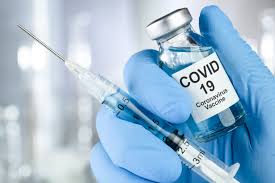Creation of a COVID-19 vaccine is the crown jewel of the White House’s COVID-19 response. President Trump unrealistically named the tedious and time-consuming endeavor “Operation Warp Speed.” To be licensed for use, a novel vaccine must be tested for safety, immune system reactivity, and protective value in humans, which can take up to 10-15 years. Unlike medications, which treat patients with a medical condition, vaccines are given to healthy people, therefore the safety margin must be extraordinarily high.
In humans, a vaccine candidate must undergo three phases of development, Phase I, Phase II, and Phase III. Following licensure of the product, Phase IV, also known as post-marketing surveillance studies (PMS) monitor the safety and effectiveness of the vaccine in the entire population. Some negative side effects of vaccines are found only in that later stage.
In Phase I, the product is given to a small number of people with a primary objective of confirming safety and immune system response. In Phase II, hundreds of people are given vaccine, including children and elderly populations, and their variability in immune responses are tracked. Phase III provides the first opportunity to evaluate vaccine effectiveness against disease. At that stage, thousands of people are given vaccine or placebo and followed afterward to track the number who become infected. FDA guidelines state that any COVID-19 vaccine must be 50% effective. In addition, Phase III evaluates the frequency of rare side effects missed in smaller studies.
So far, the most promising COVID-19 vaccines fall into three main categories: viral-vector, genetic, and protein-based.
Viral-vector vaccines engineer unrelated viruses—such as adenovirus—to carry coronavirus genes into the cell, which theoretically, induces the body to produce protective antibodies. The first and only viral vector vaccination used in the United States is Ervebo, to prevent Ebola, which received FDA approval in December 2019. Worldwide, two viral vector vaccines have been approved for “conditional” use against COVID-19: CanSino Biologics—utilizing Adenovirus 5—in China and Sputnik V—using Adenovirus 5 and 26—in Russia.
Two promising viral vector candidates have entered Phase III U.S. trials. Working in collaboration with the University of Oxford, AstraZeneca incorporated chimpanzee adenovirus, ChAdOx1 into their COVID-19 product. Trials began this summer in England, India, Brazil, South Africa, and the United States. An early frontrunner, the federal government awarded $1.2 billion in support and the European Union arranged to purchase of 400 million doses if trials are successful. Unfortunately, AstraZeneca halted global trials on September 6 to investigate a volunteer who developed transverse myelitis, an inflammatory condition causing lower extremity paralysis. As of September 11, trials have resumed in the UK, Brazil, India, and South Africa, yet the FDA is still evaluating whether US trials will resume.
The second viral vector vaccine, developed by researchers at Johnson and Johnson (J&J) and Janssen Pharmaceutical, uses Adenovirus 26 (Ad26) and is the only single-dose candidate to enter late-stage trials. In March, the federal government awarded $456 million after research revealed viral protection for monkeys and another $1 billion was awarded in August for 100 million doses if the vaccine is approved. While the J & J product is an overnight media sensation, there is still a long way to go.
Genetic vaccines appear promising; however, this type has not been licensed for use in the United States previously. Over the past decade, Moderna in partnership with National Institutes of Health, developed technology to deliver mRNA to the body’s cells safely without having it broken down by the bloodstream. mRNA stands for messenger ribonucleic acid, a molecule in cells that carries codes from DNA to make proteins. Moderna is testing a vaccine containing a sequence of mRNA from COVID-19 virus. A Phase III trial began on July 27, 2020 with plans to enroll 30,000 healthy people in the United States. In August, the federal government awarded 1.5 billion in exchange for 100 million doses if the vaccine is effective.
Pfizer, in partnership with the German company BioNTech, created a second experimental mRNA vaccine. After testing a number of options, one version was chosen for further study because it generated the fewest side effects. The Phase III trial began on July 27. In mid-September, Pfizer announced expansion of the U.S. trial to include 43,000 volunteers. The federal government awarded $1.9 billion in exchange for 100 million doses by December 2020. The European Union plans to purchase 200 million doses and Japan negotiated a deal for 120 million doses.
Although slower to progress, protein-based vaccines have a strong record of safety and effectiveness in the United States. While no protein-based vaccines have reached phase III trials yet, they are highly likely to be effective. The only drawback to protein-based vaccines is that they require an adjuvant, an ingredient used to boost immune response.
The most advanced Covid-19 contender in this category hails from Novavax and is based on the entire Sars-CoV-2 spike protein plus an immune system-activating adjuvant. Maryland-based Novavax launched Phase II trials in May and Phase III trials are expected to begin this month. The federal government awarded $1.6 billion to support research and development. If trials are successful, Novavax expects to deliver 100 million doses to the US for use by the first quarter of 2021.
Despite $10 billion invested by the federal government for research and development, it is conceivable the global pandemic might slow before a safe and viable vaccine is brought to market. Despite the fact recent polling reveals scarcely half of Americans actually plan to receive the vaccine once available, the stock market paints a more hopeful picture for profit-driven corporations and the public. While the S&P 500 (SPX) is up only 0.5%, AstraZeneca’s stock climbed 8.1%, BioNTech shares are up 87.9%, Moderna’s stock price increased 250%, and Novavax, the clear sleeper hit of 2020, has ballooned nearly 2500%.
If the COVID-19 vaccine race is anything like that last Presidential election, there will be many surprises along the way. All we can do for now is stay tuned.
